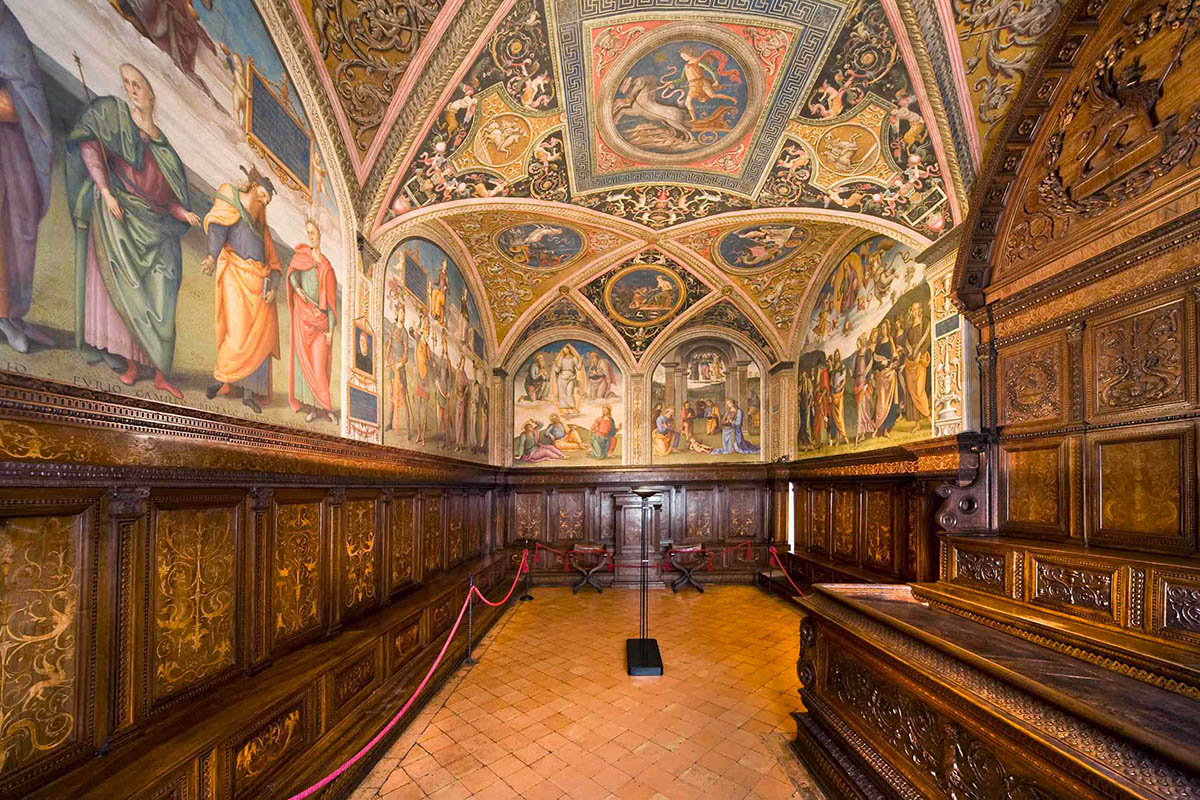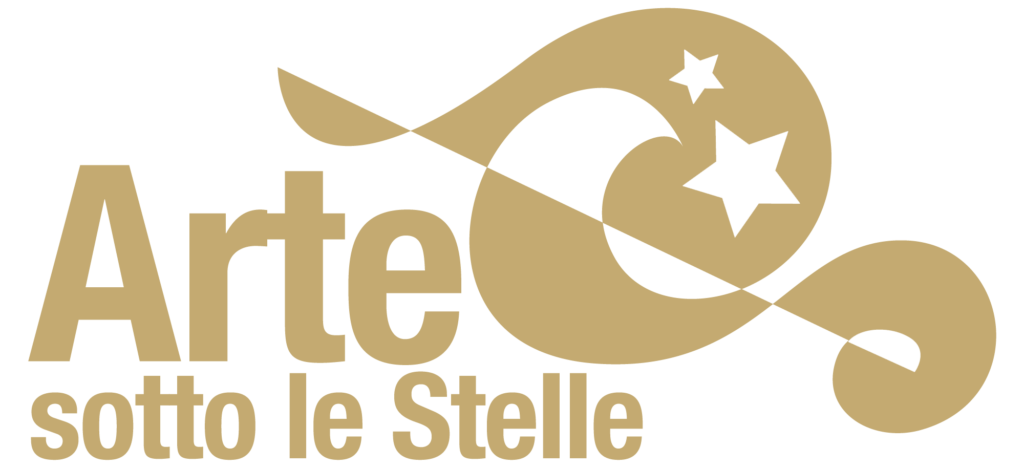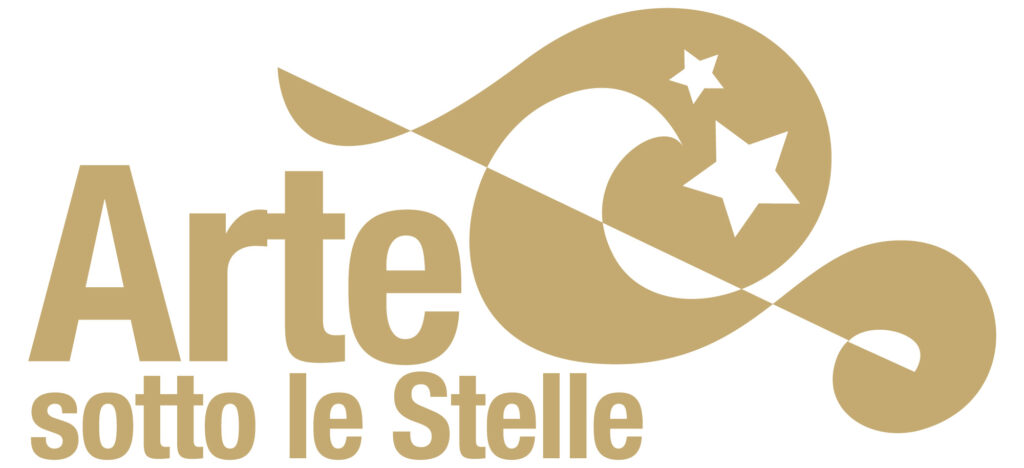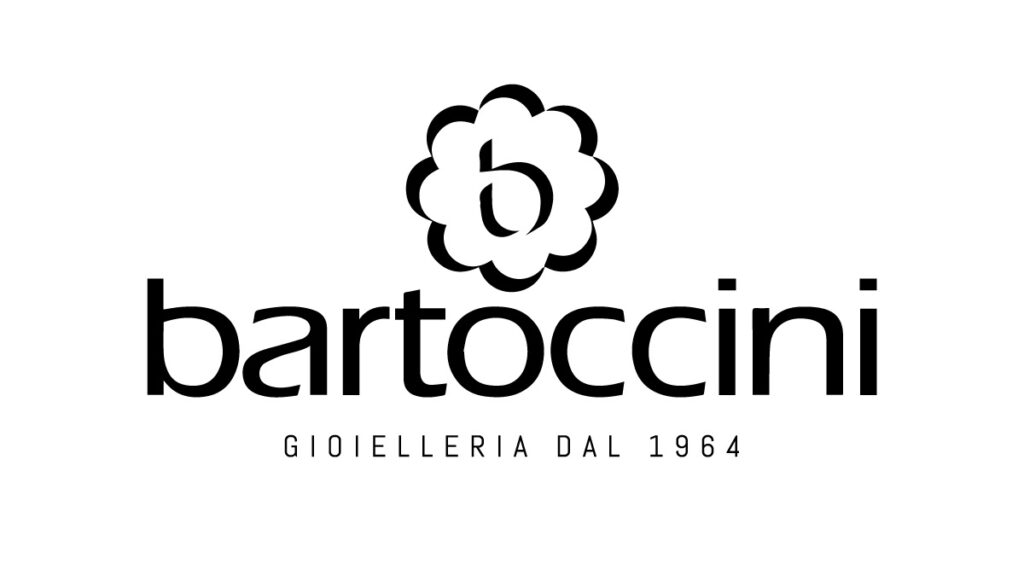Nobile Collegio del Cambio – Perugia
I lavori di sistemazione della sede vengono affidati nella seconda metà del XV secolo agli architetti Bartolomeo di Mattiolo e Lodovico di Antonio. L’accesso, che avviene tramite il portone intagliato da Antonio da Mercatello nel 1501, immette nella Sala dei Legisti, oggi sede della biglietteria del sito museale, dove si trovano i banconi intarsiati da Giampiero Zuccari nella prima metà del Seicento. Questa prima sala è riferibile ai Legisti poiché viene data all’omonimo Collegio in affitto a partire dal 1611; è un’aula stretta rivestita da austeri postergali in noce decorati da maschere femminili alternati a ghirlande, intagli con il Grifo, statue delle Virtù e una Madonna con Bambino, ascrivibili a Giovanni Andrea di Iacopo e Antonio di Menico. Si passa poi alla Sala delle Udienze, che tra la fine del Quattrocento e gli inizi del Cinquecento viene dotata di arredi lignei e di affreschi; sul fondo si apre la Cappella di San Giovanni Battista, realizzata tra il 1506 e il 1509 da Gasperino di Pietro. Nelle Sale troneggia lo stemma dell’Arte, un grifo posto al di sopra di un forziere.
Gli arredi lignei vengono eseguiti da Domenico del Tasso tra 1491 e 1493 con un innovativo motivo a grottesca, a cui si aggiunge una scultura dorata della Giustizia; la decorazione ad affresco, assegnata a Perugino, è iniziata nel 1498 su progetto iconografico degli umanisti dell’epoca, tra cui il Maturanzio, e riveste la volta e le pareti superiori.
L’Arte, nel momento in cui acquista anche i locali attigui che appartenevano ai monaci celestini e costituivano la chiesa di San Giovanni del Mercato, crea la cappella di San Giovanni, su riadattamento dell’architetto Gasperino di Pietro nel 1509 e decorazione ad affresco del pittore Giannicola di Paolo, seguace di Perugino, il quale impiega dal 1511 al 1528 per ultimare l’opera a soggetto Episodi della vita di San Giovanni Battista. Il paliotto d’altare con il Battesimo di Cristo è di Mariano di ser Austerio.
La visita del Nobile Collegio del Cambio diviene tappa obbligatoria del Grand Tour e il prezioso luogo viene ampiamente descritto nelle memorie dei giovani viaggiatori stranieri; anche oggi, come nel XVIII – IX secolo, rappresenta il luogo in cui l’arte di Perugino in Umbria ha raggiunto il vertice assoluto.











